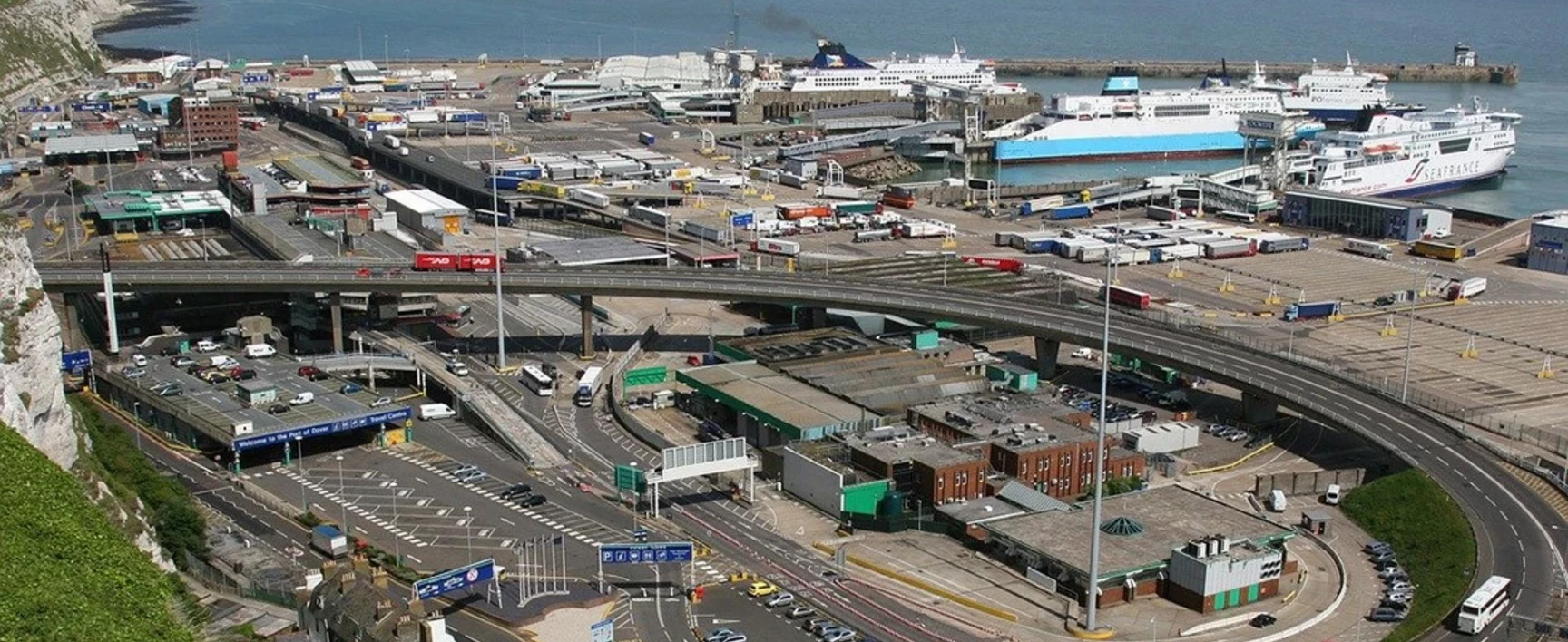The Port of Dover is the busiest international roll-on roll-off ferry port in Europe and a major international gateway for passenger and commercial traffic.
Project details
The Port of Dover is handling up to 122 billion pounds or 17% of the UK's goods traffic. The port handles 2.5 million trucks, 2.3 million tourist vehicles and 12 million passengers annually. Dover is also the second largest cruise port in the United Kingdom, handling more than 25 cruise lines and about 200,000 guests annually. Its growing cargo business includes handling fresh produce, containers, project cargo, breakbulk, grain and ro-ro traffic, located directly on the world's busiest shipping lane and the fastest sea route to Europe. Marina and real estate businesses complete the portfolio.
In 2014, as part of its asset management program and commitment to maximizing the life of its assets, the Port engaged SOCOTEC's monitoring team to design, install and maintain an automated monitoring system to continuously measure the displacement of the Prince of Wales Pier. You can read the case study on this initial work here.
Since this initial installation, the Port's ongoing structural inspections have identified a number of other assets that are essential to maintaining general operations within its site, both in the Western Dock and Eastern Dock area.
The objects to be monitored are quay walls of various construction types, including steel sheet piling, blockwork and masonry. In all cases, the port required monitoring systems that provide continuous information on displacements and rotations of these quay walls. These assets are now all equipped with automatic monitoring instruments, the data from which is used by the port to make informed decisions about the stability, degradation and performance of the assets.
At Admiralty Pier, in addition to understanding long-term trends in displacement/rotation of the structure, there is the additional requirement to actively monitor the displacement of the quay walls and upper capstones, as the Port regularly uses this structure to transport 300+ ton electrical transformers. This upper displacement is monitored with laser distometers that measure from Cruise Terminal 1 across the quay to the capstones.
The monitoring system
Surveillance areas are located at eight sites on the port site, seven on the west side and one on the east side. In addition to these eight locations, a central communications gateway is installed on the roof of the terminal control building to which all monitoring instruments report back. There is also a separate gateway for the distometers at Admiralty Pier.
"The original monitoring system was installed in 2014 on the Prince of Wales Pier, which is now part of the Dover Western Docks revival, so that system was no longer needed," explains Rory Millin, "The original monitoring system is still in operation, but it was moved from the Prince of Wales Pier to Pier D in the Eastern Docks area. This had a cost-saving benefit for the customer, as they were able to move an existing system to another location and reinstall it there, rather than investing in a new system"
The port's installed monitoring tools now include:
- In-place inclinometers (IPI) used in both single and strand formations to measure rotational motion and provide a vertical profile of the quay walls.
- Piezometers with vibrating wires for accurate, long-term measurement of tide levels.
- Automated laser distometers - to measure displacements when abnormal loads pass through the zone of influence.
- Temperature sensor - to record and report ambient temperature, which can then be compared to any measured movement of the quay wall.

test
The Port of Dover, an atypical facility

SOCOTEC Monitoring had to consider how to protect the instruments from the effects of flotsam, ship buffers, temperature fluctuations, and saltwater intrusion. Considerations included various techniques for mounting the sensors to the walls to minimize potential impacts and limit saltwater intrusion, upgrading all mountings to 316 stainless steel to withstand the highly corrosive environment and provide increased life expectancy, and identifying ways to simplify future maintenance requirements.
Because the installation took place over the quay edges and open water, much of the work was performed by SOCOTEC Monitoring in cooperation with the Port's rope access engineer. The work was tidal and working hours for the installations were limited.
SOCOTEC Monitoring had to consider how to protect the instruments from the effects of flotsam, ship buffers, temperature fluctuations, and saltwater intrusion. Considerations included various techniques for mounting the sensors to the walls to minimize potential impacts and limit saltwater intrusion, upgrading all mountings to 316 stainless steel to withstand the highly corrosive environment and provide increased life expectancy, and identifying ways to simplify future maintenance requirements.
Because the installation took place over the quay edges and open water, much of the work was performed by SOCOTEC Monitoring in cooperation with the Port's rope access engineer. The work was tidal and working hours for the installations were limited.
Data management
Because the facilities are spread over a large geographic area and there was no desire to rely on multiple data loggers at all monitoring sites, a wireless data transmission system was installed in which data from the sensors is relayed via wireless nodes to a central gateway receiver in the Eastern Dock. The gateway is equipped with a modem for external communications and is powered by a mains connection provided by the port.
All data is automatically uploaded to SOCOTEC Monitoring's Calyx online data visualization software, with alerts sent via SMS or email to multiple users when thresholds are exceeded. The frequency of sampling and uploading can be changed by the SOCOTEC Monitoring team at any time during the contract period.
"We established a good relationship with the Port of Dover team and worked closely together to develop the most reliable and accurate monitoring system." "The system provides autonomous remote monitoring that allows the customer to monitor changes to their assets due to tidal influences and abnormal loads to assess if there are any long-term movement trends."



